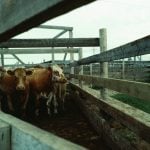From surveillance to testing to restocking, two experts outline how an investigation works
A case of bovine tuberculosis was detected in a cow at slaughter in Alberta. It was traced back to a farm in Saskatchewan, where more positive animals were detected, leading to the launch of a vigorous eradication and investigation process by the Canadian Food Inspection Agency. But many producers don’t know what this process looks […] Read more













